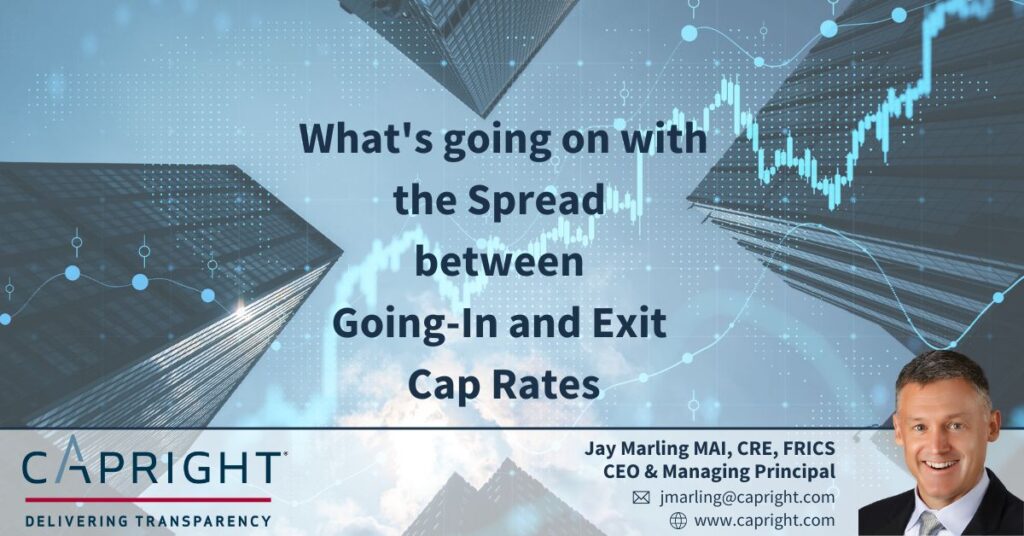What’s going on with the Spread between Going-In and Exit Cap Rates
June 22, 2023
In normal economic times, an exit cap rate for a #CRE asset at the end of the holding period is typically significantly higher than the going-in cap rate. This is the case because, upon reversion, the property will be older. This is also the case because there is greater uncertainty about future market conditions (i.e. we know what the cap rates are today, but we do not know what they will be at the end of the hold). In times of economic turbulence, the traditional spread between going-in and exit cap rates can narrow, evaporate, or sometimes even invert. This is typically a signal that buyers and sellers believe that current market conditions are soft and will improve in the future. We are seeing this phenomenon play out in the current environment. At Capright, we have noted a decisive narrowing of spreads between going-in an exit cap rates in deal underwriting and valuations. Perhaps this is not surprising given that the 1-year Treasury is ~150-basis points higher than the 10-year Treasury, suggesting the market anticipates a lower cost of debt in the future. Sometimes we may hear about deals with low cap rates and more traditional going-in/exit spreads, but these deals all involve in-place income that is significantly under market.


